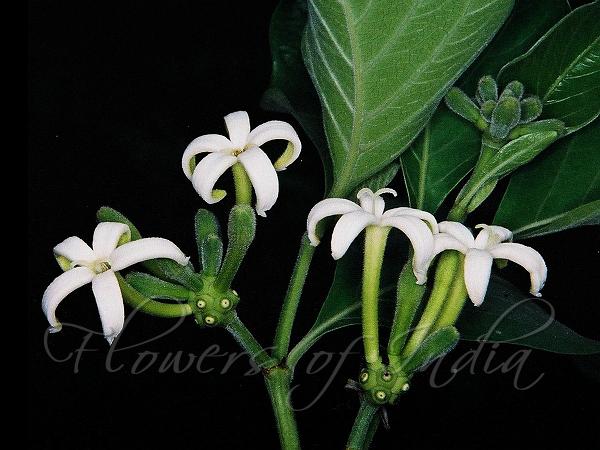|
| Indian Mulberry |
|

|

|
|
|
|
Photo: |
Botanical name: Morinda coreia Family: Rubiaceae (Coffee family)
Synonyms: Morinda tinctoria, Morinda pubescens, Morinda coreia var. tomentosa
Synonyms: Morinda tinctoria, Morinda pubescens, Morinda coreia var. tomentosa
Indian Mulberry is an evergreen shrub or small tree growing to 5-10 m tall.
Stem is short and crooked, with rough bark with deep longitudinal cuts.
Oppositely arranged leaves are 15-25 cm long, oblong to lancelike. Flowers
occur in spherical heads, 3-5 cm acros, on a stalk 2-3 cm long. Near the
stalk of the flower-head, there is a one small linear leaf. The flowers are
tubular, white, scented, about 2 cm long. Oblong petals are about 1 cm
long, 3-7 in number. Stamens as many as petals. The fruit is a green
syncarp, 2-2.5 cm diameter. The plant is extensively cultivated in India in
order to make the morindone dye sold under the trade name "Suranji".
Morindone is used for the dyeing of cotton, silk and wool in shades of red,
chocolate or purple. The colouring matter is found principally in the root
bark and is collected when the plants reach three to four years of age.
Flowering: May.
| Identification credit: Navendu Pāgé | Photographed in Maharashtra & Jharkhand. |
• Is this flower misidentified? If yes,